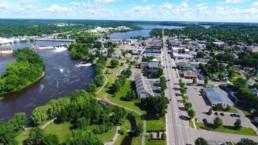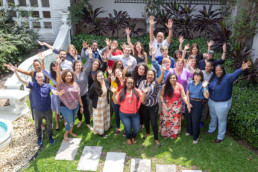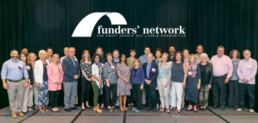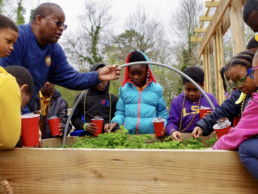Know Your Network: Don Hickman of the Initiative Foundation
BY Martha Cecilia Ovadia
TFN Senior Program Associate for Equity Programs and Communications
Who are the people that make up The Funders Network? Know Your Network is an occasional Q&A series lifting up voices from across the network. In this post, we’re featuring a Q&A between Don Hickman of the Minnesota-based Initiative Foundation and Martha Cecilia Ovadia of TFN. Don is also a member of TFN’s Board of Directors and TFN’s Philanthropic Preparedness, Resiliency and Emergency Partnership, a learning cohort created to provide resources for community foundations to build their skills and leadership capacity in order to be better informed and prepared should a natural disaster strike their communities. (Responses have been edited for length and clarity.)
Q. I know you are currently the vice president for Community and Workforce Development for the Initiative Foundation in Little Falls, Minn., in addition to serving as a TFN board member. But we hear you were a scientist and community activist before joining the philanthropic sector. What was that like?
The first 20 years of my career was spent as an environmental scientist. I loved the field, which included time as a trail guide in Rocky Mountain National Park, surveying water quality in the Black Canyon of the Gunnison, organizing rural low-income communities in New England to protect water quality, working as a scientist and lobbyist for the Massachusetts Audubon Society, and studying the endangered Humpback Chub in the Grand Canyon.
Q. What brought you to philanthropy? Is there anything specific that has surprised you about working in the sector?
I had moved to Minnesota to marry my wife in the mid-1990s, and felt unfulfilled working as an environmental consultant. I started volunteering with local nonprofits, and the Blandin Foundation hired me as a field contractor. After about a year with Blandin, the Initiative Foundation hired me as their environmental program officer, and I’ve remained there so long that I’ve added a varied array of other foci, from improving access to quality, affordable childcare to helping launch a program for Somali immigrants to start their own businesses in Central Minnesota. Right now, my top priority is to help prepare for the economic impact of the closure of the largest coal power plant in the Midwest, which represents nearly 75 percent of the local tax base. Every day I am surprised and humbled at how hard people will work to improve their communities and help their neighbors when they’re offered the most modest of encouragement and occasional funding.
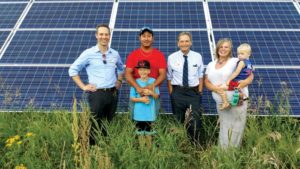
Q. You are very involved in our PPREP learning cohort. What is one thing you have learned working with PPREP that you think has been helpful or illuminating during the ongoing coronavirus pandemic?
The TFN team and peer foundations have really opened my eyes to how unequal access to resources and tools of resiliency are. The outcomes and recovery for a middle-class homeowner with insurance are so profoundly different than those available to the renter with no bank account or health care. Heaven forbid that their language or culture is different than the dominant culture. We know that compounds the inequities and presents even more barriers to equitable relief and recovery.
Q. In your role at the Initiative Foundation, you work with a lot of immigrant and refugee communities. What is one thing you wish folks knew about the people you are working with? And what is the hardest part of doing this work?
This element of our work is perhaps my greatest, and most unexpected joy. Central Minnesota (and especially the community of St. Cloud) is a major hub for refugees and immigrants; people who’ve fled very difficult situations in hopes of improving the lives of their families. If everyone had the work ethic and commitment to their families as the individuals I routinely engage with, I would have confidence that this country could overcome any challenge or obstacle. Unavoidably, I also see acts of hatred and prejudice, and it breaks my heart to think how quickly most of us have forgotten the immigrant experience of our ancestors.
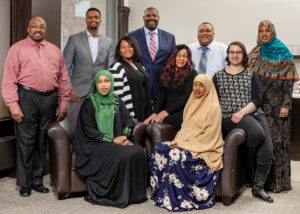
Q. In the past few weeks, we’ve witnessed the murder of George Floyd at the hands of police in Minneapolis — less than two hours from your home in Little Falls — which has prompted protests across the globe and a national reckoning on race. As someone who works closely with local non-profits in the region, how is this impacting the communities with whom you work? What do you see as philanthropy’s role in meeting this historic moment?
This is pretty painful. In Minnesota we liked to believe that we’re a more inclusive and progressive state. Four years ago, when Philando Castile was killed we told ourselves that a terrible thing had happened, but that now we’d changed the culture and it would never happen again. With the recent death of George Floyd none of us can deny that the percentage of bad outcomes of law enforcement encounters are horrific for people of color, including in our own state. For two weeks I was pretty deeply depressed, until I had an encounter with a TFN colleague from the Surdna Foundation, who told me that she believes that change can happen; that we’re in a time of awakening. In the weeks after that I’ve participated in conversations on equity on a daily basis, with people which whom the issue had never been raised before. If change were easy it would have been done long ago, and confronting systemic racism will never be easy. But I am prepared to believe that more and more people are ready to listen to others, work for change, and create a more just community. The arc of history…
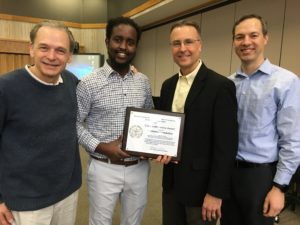
Q. With so many of us sheltering in place, and knowing you must have traveled quite a bit for work before we all hunkered down, can we live vicariously through you for a minute and ask what your favorite site visit or work trip has been so far?
That’s like asking someone to identify their favorite child! One of the joys of participating with TFN has been the varied “learning from place” experiences associated with PPREP, the River Partnership of Community Foundations, which ended a few years ago, or TFN’s conferences. I think the most memorable trip might have been to the Mississippi Delta, including stops of historical significance to the Civil Rights Movement and in musical history.
If I could host visitors to my region right now, I would take you to the Mosque and Islamic Center of St. Cloud, have the Somali entrepreneurs cater our lunch, ask friends at the Leech Lake Reservation to demonstrate how the Ojibwe people harvest wild rice, and meet some of the citizen-scientists working to prevent the spread of aquatic invasive species in our land of 10,000 lakes.
Q. We always like to ask about home. As a local in Little Falls, what is your perfect day in Little Falls? Where would you have lunch? What’s that secret place you wish everyone knew about?
The Mississippi River literally flows outside the door of the Initiative Foundation; on a spring day you can walk below the dam (once used to power paper mills) and feel its cold spray. The Charles Lindbergh childhood home is across the river, and Chief Hole in the Day (a key Ojibwe leader) is buried just upriver. Zebulon Pike reached this area in 1805 as part of an early expedition through what the Americans called the new Louisiana Territory. The downtown area is a classic small Midwestern town, with lovely restored storefronts. If you look closely at the granite edifice of the American Bank you can see that the name is not off-center, but until WWI was the “German-American Bank.” One can guess that the offending ethnicity was sandblasted away about this time.
The Black and White Deli is the favorite downtown lunch spot for many visitors, but I am equally fond of Little Fiesta and Sanchez Burrito, both owned and operated by Latinx families that now call Little Falls home.
North of town is the Camp Ripley National Guard Training facility, where volunteers from throughout the country come to practice artillery drills and night maneuvers. Interestingly, the land encompassed by the camp also includes the longest stretch of undammed Mississippi River in Minnesota, and is also home to a pack of around 40 timber wolves, and an equally robust number of black bears. Several winters ago, my wife spent her sabbatical radio-collaring and tracking both.
Life-long residents of the area likely would confess to a secret fishing hole (the region’s true religion), but I most treasure riding my bike on country roads, over hills and around the lakes, ideally on an autumn day when the leaves are ablaze, but the air is cool and the sunshine warm.
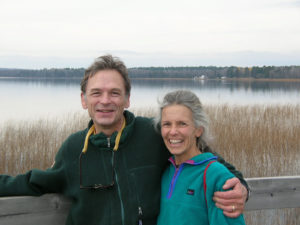
Q. We ask this of all of our Know Your Network contributors: What is something you do as a practice of self-care, especially in 2020 when this work is so stressful and requires us to really rise to the occasion?
I confess, the “stay at home” has been very gentle on me. I’m NOT spending two hours a day in my car, and can instead work longer while still having more time to jump on that bicycle or swim in my lake (once the water warms up). I also can’t help but reflect every day on the privileges of my position; both adults in the home are employed, our home is paid for, we could access health care if we needed it, our refrigerator is full, and our youngest child is able to continue her college classes from home on our sometimes spotty WiFi. So many of the residents of my region couldn’t list a single one of these blessings for themselves, so whenever I feel tired or frustrated by the challenges of choosing who does and doesn’t receive funding. I remind myself of all that I have to be grateful for, and hope I can bring hope to others.
______
About the Author
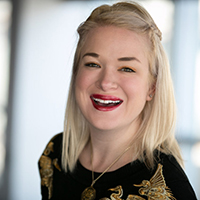
Martha Cecilia Ovadia is TFN’s Senior Program Associate for Equity Programs and Communications.
Featured photo at top: Aerial view of Little Falls, Minn. Photo credit: Little Falls Chamber of Commerce
Our Network. Our Voices: The Funders Network debuts new website (and a shorter name!)
BY Patricia L. Smith
TFN President & CEO
|
Never has it been more important for us as a network to come together to share our experiences, lift our voices and take action. We're grappling with an ongoing pandemic, a faltering economy and a nationwide reckoning on systemic and brutal racism in our society. Today, I'm proud to announce the launch of TFN's new website, a debut planned long before these current upheavals — but which comes at a time when we must make good on our commitment to help you, our members, deepen your learning and tell your stories. Voices of TFNOn our new site, you'll find a host of resources that will help you better navigate TFN's rich offerings of programs and resources, including a new section devoted to our approach to racial equity, a digital library featuring our most recent publications, and an interactive membership map to better identify potential connections in your region. And you'll find the voices of your colleagues and peers in the philanthropic sector throughout the website, most notably on our TFN Blog. You'll read about how PLACES Alum (and fellowship facilitator) Bina M. Patel is channeling the transformative power of outrage to meet this moment with purpose. You'll learn why greenways are an essential tool to help communities come together equitably in the COVID era from former TFN board chairs John Mittherholzer and Tom Woiwode. And you'll read current TFN board member Shawn Escoffery's compelling, gut-wrenching account of his arrest while protesting police brutality in Los Angeles, originally published in the Chronicle of Philanthropy. Shawn's piece is a cri de coeur, a call to action, and a must-read for the sector. This part rings especially true: "This is a time of reckoning for the philanthropic world, which despite good intentions has often struggled to adequately address the needs of Black and brown people with effective, compassionate, and sustained action. On the day after my arrest, my inbox was flooded with well-wishes from colleagues and peers: “How are you doing?” I wanted to answer with a better set of questions: What I am doing. What are we all doing?" It's a question I'll be reflecting on, especially as we head into a long holiday weekend celebrating this imperfect, imperiled country. Our New NameFinally, you'll see that our new logo indicates a new — and much shorter — name for our network. For two decades, we've been officially known as the "Funders' Network for Smart Growth and Livable Communities." But nearly all of our members (and most everyone else), has always referred to us as "TFN." So we decided to legally change our name to The Funders Network in a nod to brevity. Our new logo, with its various threads woven together, also serves as a visual reminder of our core identity. We are The Funders Network — emphasis on network: a group of people, with diverse backgrounds and areas of focus, connected by common goals and purpose. We look forward to strengthening those connections by sharing, learning and leading together. Today and always. About the Author |
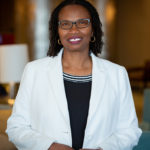
Patricia L. Smith is the president and CEO of The Funders Network, a robust network of more than 170 foundations, including place-based and community foundations as well as state, regional and national funders committed to creating equitable, sustainable and prosperous communities.
|
|
On Mobilizing Outrage
BY Bina M. Patel
CEO, Saathi Impact Consulting
and TFN PLACES Alum
Bina Patel is an alum of TFN's PLACES fellowship, a year-long leadership development program for professionals in philanthropy to better understand issues of race, equity and inclusiveness — and to then translate those skills and knowledge in to their grantmaking practices. She currently serves as a facilitator for the PLACES fellowship cohort, which is conducting its learning virtually this year. This post originally published on the Saathi Impact Consulting blog.
On a recent webinar, as the pandemic sealed us off in corners of bedrooms and makeshift home offices, the check-in question of the day was “How is this moment changing you?”
Suddenly, I was struggling, feeling tears well up at my exhaustion, of the overwhelming nature of recent events, the current uncertainty. And when I dug a bit more deeply I confronted the depths of my own rage at the unrelenting racism we witnessing every day, the abuses of power that go unchecked from our leaders, and the inequality that has been exasperated by the pandemic. I was overwhelmed -- trying to take in the ever extreme range of the rollercoaster feelings I was feeling. I was uncomfortable with these new corners of rage I was holding. I almost didn't recognize myself.
At the edges of this darkness was a glimmer. I saw at the jagged ends of my grief and exhaustion a glimmer of truth: this moment was making me more radical. I didn't say it out loud, but I saw it. I could feel it, this truth sitting at the edges of my overwhelm, patiently waiting.
To get to a place of new truth-telling and edge walking, of embracing the radical, I had to lean into the new kind of rage and outrage, not shrink from it. I had to expand to hold more of all of the feelings, expand to be able to hold the pain and rage, while also being able to function and be purposeful - to show up and do my job, and to still be able to take care of myself.
This wasn't the first time I felt this way. Not too long ago I stood on the land of the Sioux Nation at Standing Rock and listened to Elders, endured meetings full of "Karens", and had to shield myself from the macro-aggressions (*there is no such thing as microaggressions.) I had sat at immigration court and watched the proceedings of asylum seekers, stood at the border wall watching CBP, attended the funerals of black young men killed by police, observed policymakers make budget decisions with little regard to the humans affected, watched the news of the 2016 election, etc, etc, etc. This wasn't the first time and it of course won't be the last.
I knew that this outrage needed some movement - some way out of being labeled "outrage." It cannot be in vain and it can't take me out of my purpose.
For outrage to be righteous and rooted it must be of service to the collective.
To be of service, I had to resist the urge to shrink, to let it eat me up. I had to undo feelings of shame because some folks think outrage is too much, too unwieldy. I had to undo my own feelings of defeat because I had internalized that outrage meant I was failing to show up with love.
How could I be an ally, agitator, change agent, strategist, speaker, coach, and co-conspirator if I didn't feel outraged? How could I do the work of justice, equity, and inclusion if I rejected feeling pain and outrage?
Read the full post here.
About the Author

Bina M. Patel is the CEO of Saathi Impact Consulting, which partners with philanthropic, nonprofit, and social innovation organizations to advance justice, belonging, and equity. She is an alum of the PLACES 2012 Cohort. To learn more about Bina's journey as a PLACES alum, visit our PLACES X: Stories of Impact series.
Feature image photo credit: Biansho | Dreamstime.com
Paths to Healing: Greenways are essential in the COVID era
BY John Mitterholzer, The George Gund Foundation
and Tom Woiwode, the Community Foundation for Southeast Michigan
The Covid-19 pandemic crisis presents one of the biggest challenges our nation has faced. Not only are we grappling with a public health emergency and a faltering economy, but these twin crises have laid bare stark inequities in our communities. It has forced us to acknowledge what has been obvious for far too long — that we do not all enjoy the same opportunities, whether it’s economic equality, access to a healthy environment, or opportunities for social or cultural experiences. It has required us to think differently about how we live, work and play. And it is mandating that we create communities that bring people together to enjoy in those shared opportunities equally and equitably.
So what are our options? In this time of unprecedented challenges, the public has given us some pretty strong clues. When people are looking for solace, respite, an opportunity to get out and socialize, where have they gone? Trails, greenways, parks, public spaces. In droves. In volumes and numbers never seen before. The Rails-to-Trails Conservancy reports a surge of as much as 200 percent in trail use nationwide. In fact, the demand for access to places to walk or bike has prompted cities around the country — including Boston, Milwaukee, Chicago, Denver, and Washington, D.C. — to close streets to vehicle traffic and open them up to pedestrians and bikers. Oakland has dedicated 74 miles of streets to non-motorized use.
The uptick in activity is not surprising, given the legions of people who have felt trapped inside their homes as cities across the country have restricted access to most everyday activities. But the potential benefits of these outdoor spaces go beyond just offering a place for a pent-up population to stretch their legs. It’s not uncommon to think of trails and greenways as designed for recreation experiences. But they are so much more.
Greenways create economic opportunity. According to a 2012 study by The American Association of State Highway Transportation Officials (AASHTO) study, every $1 million invested in greenways, bike lanes and sidewalks, creates 17 jobs — significantly more than any other kind of infrastructure project. A 2019 study for the East Coast Greenway Alliance showed a more than ten-fold return on the impact of greenways investment.
They provide health benefits. While walking, running and bicycling can be enjoyable health preventative measures, the benefits don’t just stop at health care cost savings. Physical activity also increases workplace productivity, and people using trails enjoy an intangible boost to their overall well-being.
Trails and greenways help improve air and water quality. They take cars off the road, and, by protecting land along rivers and streams, greenways prevent soil erosion and filter pollution.
They improve access to mobility and transportation options. Greenways offer transportation options for those who would like a choice other than a car, or who need that choice because they don’t have other transportation options. In cities like ours, Detroit and Cleveland, roughly one-third of the resident population does not have access to a personal vehicle, in communities with limited public transportation options. Greenways link people and institutions, community assets, neighborhoods and each other in ways that are much more personal and connected.
And one cannot ignore the public voices being raised right now. In order to reap the full benefits of these public spaces, we need to be mindful of creating spaces where everyone feels welcome — and ensure that resources and access are equitably distributed. Creating communities that are sustainable, prosperous and just, a key element of The Funders Network’s mission, means acknowledging and undoing the racialized histories of our built environments that have allowed inequities to thrive.
It is essential that we create communities that serve everyone, equitably. That means we need to rethink how communities are designed, how they function, and we need to ensure that all people benefit from community assets and resources. The outdoors, and outdoor experiences, should be safe and enjoyable for all people, including people of color. We must design communities so they serve people — all people. Greenways help in doing that.
So why raise this issue now? Greenways and trails may be the best examples around of really effective public-private partnerships. TFN members have been leading the way in developing truly transformative projects that are changing the way their communities engage their residents. They include:
*The William Penn Foundation has been the driving force behind greater Philadelphia’s 300-miles-and-growing Circuit Trails;
*The Hyde Family Foundation is helping to connect Memphis to its neighboring communities along the Wolf River Greenway;
*Thanks to the leadership of the Walton Family Foundation, the 36-mile Razorback Regional Greenway links Bentonville to Fayetteville and all the communities in northwest Arkansas.
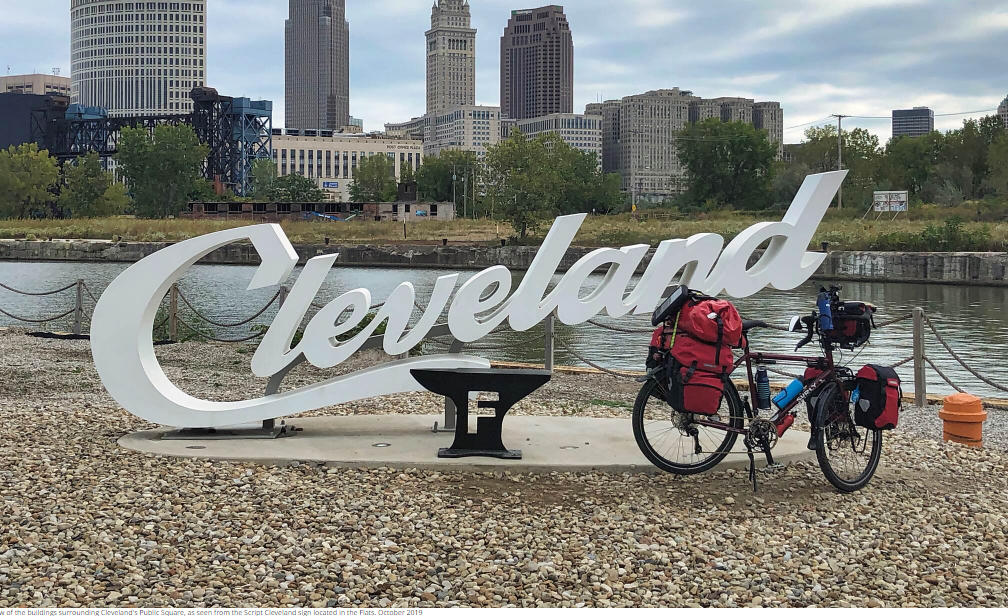
And in our own communities in Michigan and Ohio:
*A philanthropic partnership that includes the Community Foundation for Southeast Michigan, The Kresge Foundation, the Ralph C. Wilson Jr. Foundation and other philanthropic partners are working together to build a 35-mile loop trail that will connect all the neighborhoods in Detroit, to each other and to the revitalized Detroit Riverfront..
*The Cleveland Foundation and The George Gund Foundation have worked with local partners to create the Lake Link Trail, a project that uses greenspace and trails to connect the Cuyahoga River to Lake Erie. The Lake Link Trail connects the oldest public housing development in the country, Lakeview Terrace, and a low-income senior housing complex, Riverview Terrace, to the lake.
There is one common theme here, and it is especially important at this particular time. These philanthropic resources and private investments complemented and leveraged public dollars to build the above-mentioned extraordinary trail networks, and so many more around the country. Because of what we’re seeing today regarding greenways — the overwhelming public demand, the extraordinary and varied community benefits, and this unique moment in time — trails and greenways must be considered essential infrastructure in any infrastructure stimulus bills.
What can you do?
Think differently about trails and greenways. See them as they are and can be — ways to promote equity, create art, stimulate the economy, protect the environment, create safe spaces for families and children, provide transportation options for all, and serve as transformative community development.
Take steps to ensure that trail and greenway projects do not exacerbate racial and economic disparities. Fund community organizations that are full participants in the decision-making processes. Community leaders, in particular people of color, must be authentically engaged in the policies, planning, design and development of trails and greenways.
Help make the case to Congress and spread the word. Greenways are essential infrastructure. Over 150 trail organizations and community development groups have signed on to a letter, asking Congress to include greenways in the next stimulus bill. Learn more about this effort by contacting Dennis Markatos-Soriano, president of the East Coast Greenway Alliance, at dennis@greenway.org. The text of the letter can be found here.
Join TFN’s Collaborative on Mobility and Access to learn more about creating mobility options that are environmentally beneficial, economically sound and equitable for all. (For more information, reach out to program lead Martha Roskowski at mailto:martha@furtherstrategies.com.)
We hope you join us in recognizing the many contributions of greenways, and in working toward communities that are greener and healthier — for all.
Yours for a greener, more equitable world.
About the Authors:
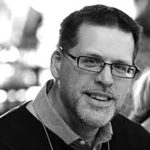
John Mitterholzer is a senior program officer at The George Gund Foundation. He served on TFN’s Board of Directors from 2009 to 2018, serving as chairperson from 2016 to 2018.
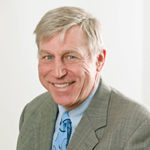
Tom Woiwode is with the Community Foundation for Southeast Michigan. He served on TFN’s Board of Directors from 2011 to 2020, serving as chairperson from 2018 to 2020.
Featured image photo credit: Jenishayoga | Dreamstime.com
ICYMI: Catch up on Inclusive Economies Reads
By TFN Staff
Looking to catch up on your reading?
In case you missed these posts earlier in the year, we featured three guest bloggers to reflect on key lessons and takeaways shared during TFN's Inclusive Economies inaugural meeting in the fall.
The Road to Good Jobs and Quality Work | Sara McCarthy, Director of Communications at the Fund for Our Economic Future.
Investment, Displacement & Engagement | Cari Morales, National Urban Fellow at the Cleveland Foundation
Awareness Building to More Thoughtful Action | Treye Johnson, Federal Reserve Bank of Cleveland

About Inclusive Economies
TFN’s Inclusive Economies working group brings place-based funders and related partners from across the sector together to build working relationships, advancing understanding of practices and policies that lead to inclusive prosperity, and taking joint action that drives the field forward. We apply a three-part focus — race, place and prosperity — to economic growth and development. A particular goal is connecting people and neighborhoods of color to employment and wealth-building opportunities through investment, systems change, and policy reform.
Inclusive Economies launched in 2019, replacing TFN’s Restoring Prosperity in Older Industrial Cities working group. This new group represents a vision of shared, restorative, and equitable prosperity in places of all types (urban, suburban, and rural), sizes (neighborhoods, cities, towns, and regions), and market conditions (weak, moderate, and strong).
For more information about TFN's Inclusive Economies, contact TFN President and CEO Pat Smith at pat@www.fundersnetwork.org.
Election Results: Meet New TFN Board Members & Officers
By Pat Smith, TFN President and CEO
We're excited to announce three new additions to our TFN Board of Directors: Michael Coffey, Eric Muschler and Karla Twedt-Ball.
Please join me in congratulating our newest members of the TFN Board of Directors, as well as welcoming back members who were up for reelection this voting cycle. Additional congrats to our board members who will be serving as board officers, including our new Board Chairman Craig Martinez.

TFN Board of Directors Class of 2020-2022 and Board Officers
At a meeting held Jan. 24, 2020, in Miami Beach, Fla., TFN’s Board of Directors approved the following slate for the class of 2020-2022 and recommended a vote in favor of election. TFN members cast ballots in March approving the 2020-2022 slate. (Our board serves staggered terms, so not everyone is up for reelection at the same time.)
Please note that Michael Coffey, Eric Muschler and Karla Twedt-Ball are being elected to their first terms of office. The remainder pictured below are current directors whose terms of office were renewed during this voting cycle.
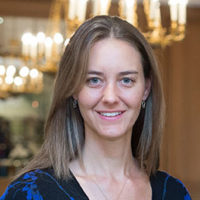
Jessica Boehland
Senior Program Officer, The Kresge Foundation
(Renewed for 2020-2022 term.)
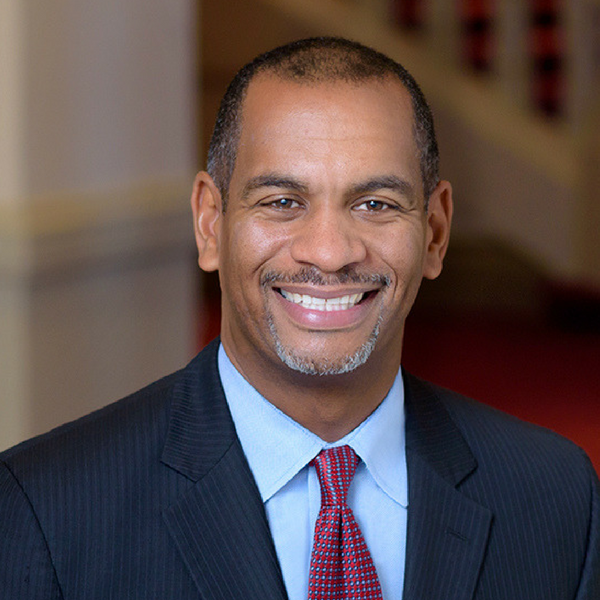
Michael Coffey
Senior Program Officer, The Greater Cincinnati Foundation
(New member for 2020-2022 term.)
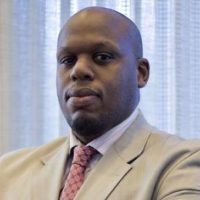
Shawn Escoffery
Executive Director, Roy and Patricia Disney Family Foundation
(Renewed for 2020-2022 term.)
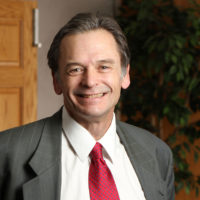
Don Hickman, Vice Chair
Vice President for Community and Workforce Development, Initiative Foundation
(Renewed for 2020-2022 term. Board officer position is for one year.)
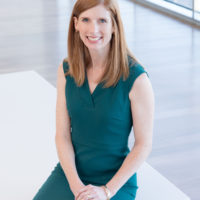
Elizabeth Love, SecretarySenior Program Officer, Houston Endowment
(Renewed for 2020-2022 term. Board officer position is for one year.)
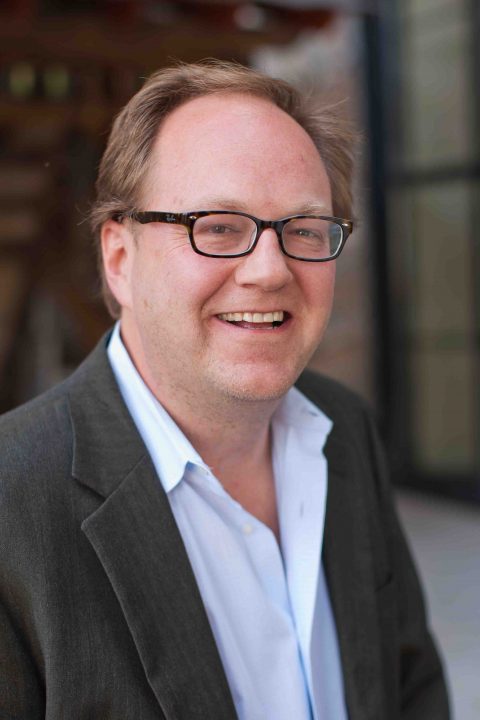
Eric Muschler
Program Officer, McKnight Foundation
(New member for 2020-2022 term.)
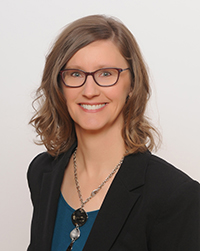
Karla Twedt-Ball
Senior Vice President, Greater Cedar Rapids Community Foundation
(New member for 2020-2022 term.)
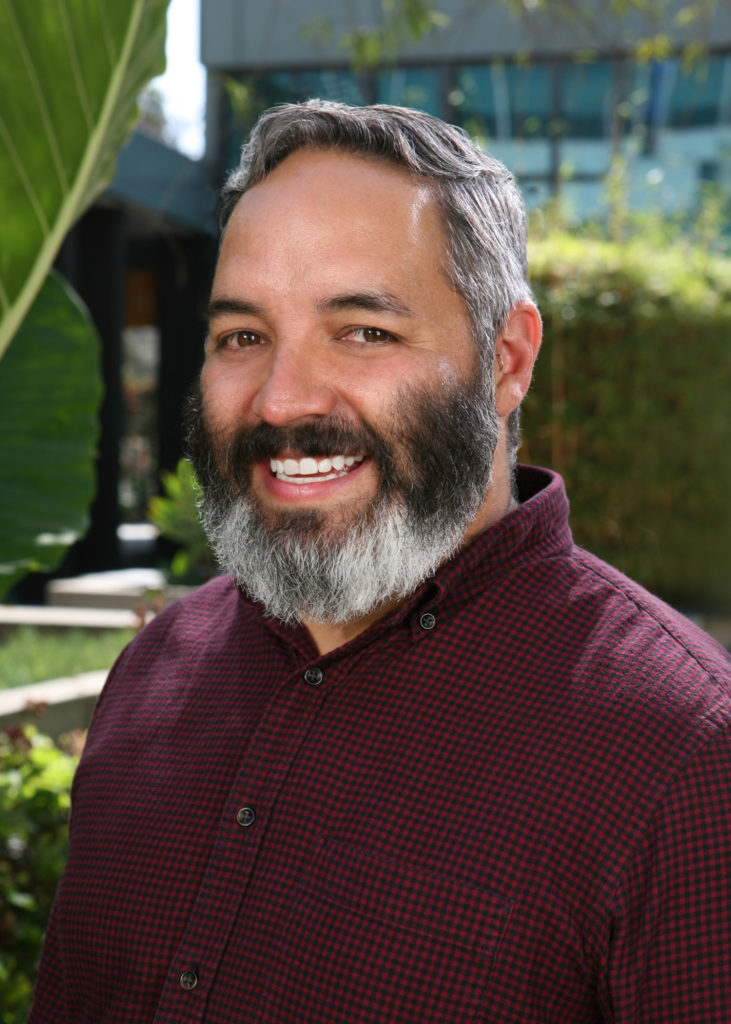
New TFN Board Chairman
Craig Martinez, Chairman
Program Officer, The California Endowment
We are thrilled to share the news that Craig Martinez was elected to serve a two-year term as chairman of TFN's Board of Directors. He was first elected to the TFN Board of Directors in 2015 and is currently co-chair of TFN's Smart Growth California Steering Committee.
He is a proud alum of TFN's equity-focused PLACES Fellowship's 2013 cohort, and is the first PLACES alum to serve as chairperson of the TFN Board of Directors!
(We should also note that Craig was one of the co-chairs of our 2020 Annual Conference in San Diego. Although our conference was ultimately cancelled, it's only fitting we acknowledge the hard work that went into the planning of the conference.)
Remaining Board Members
TFN Board of Directors whose terms were not up for renewal this year are:
C.J. Eisenbarth Hager
Director, Healthy Communities, Vitalyst Health Foundation
Michelle Knapik
President, Emily Hall Tremaine Foundation
Scot Spencer
Associate Director, Local Policy, The Annie E. Casey Foundation
Kellie Terry
Program Officer for Sustainable Environments, Surdna Foundation
Continuity of our board and its duties is an essential component in ensuring our work moves forward as seamlessly as possible, especially as we navigate the days and weeks ahead.
We sent virtual ballots to the primary contacts for organizations that are members in good standing as of March 31, 2020. (For more information about the annual election of TFN directors, please see the Election Information Guide.)
Thank you everyone who took the time to cast their ballots.
And thank you to the TFN Board of Directors for their ongoing support of the network and commitment to creating communities that are equitable, sustainable and prosperous.
Inclusive Economies: The Road to Good Jobs and Quality Work
By Sara McCarthy is Director of Communications at the Fund for Our Economic Future
The work of TFN’s new Inclusive Economies working group began in earnest with the group’s November 2019 inaugural annual meeting in Cleveland. This is the third in a series of guest-authored posts that reflect on key meeting sessions and topics. (Click to see the meeting agenda and read speaker bios.)
Entangled with concerns about automation and job scarcity, few topics elicit more debate than “the future of work.” For Inclusive Economies' panel on the topic, TFN asked Heidi Shierholz, senior economist at the Economic Policy Institute in Washington, D.C., to lay the groundwork for an evidence-informed discussion of the trends shaping the future employment environment, and their implications for marginalized workers. Shierholz’s remarks prompted spirited exchange among fellow panelists, who brought a wealth of policy, research, workforce, capital deployment, advocacy, and power-building expertise to bear on the question of what it will take to create well-paid, high-quality work for all. Here, Sara McCarthy of the Fund for Our Economic Future shares the top-line takeaways from the discussion.
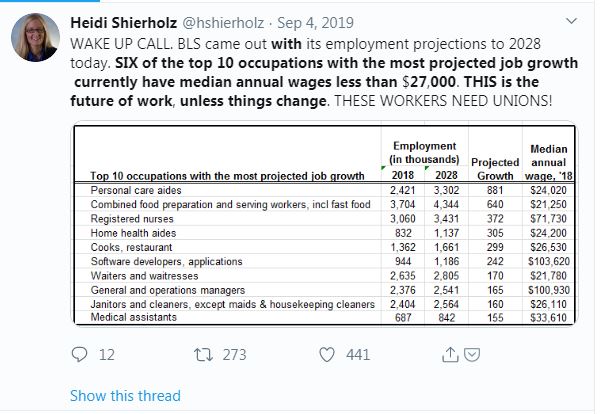
This tweet, originally posted after the Bureau of Labor Statistics released its 10-year employment projections last September, neatly encapsulated economist Heidi Shierholz’s central message to the funders gathered to hear from her and other panelists during their session at the Inclusive Economies inaugural meeting. Contrary to fears, the biggest threat to working people is not that automation and artificial intelligence will reduce the overall number of available jobs. Throughout history, jobs lost to technological change have been offset by the rise of new jobs. Rather, Shierholz says, the real threat to workers, especially to women and people of color, is that so many of the jobs available in the future will pay so little.
This assessment set the stage for a lively and occasionally heated discussion of how this national trend is playing out now in local communities. Panelists’ concerns included the validity of the employment data and the effects of automation on individual people; the push for entrepreneurship versus employment (and the detriments of that); the relationship between employer and employee; and the barriers that exist to quality work.
A consistently unifying theme was the centrality of race in workforce discussions. As panelist Caryn York, CEO of Job Opportunities Task Force in Baltimore, asserted, “The workforce is not monolithic. Race and place have to be front and center when we deal with these challenges.”
Another point of agreement: Programmatic responses won’t be enough to reverse decades of declining wages and erosion of worker supports. Meaningful change in the workforce arena will require policy change.
For Shierholz, this means a multi-pronged approach to ensure worker well-being, including a stronger safety net and a good jobs agenda based around support of unionization, increasing the minimum wage, and paid time off, as well as strong enforcement of these policies.
Where does philanthropy fit in? The panelists offered several concrete suggestions during the session, moderated by Emily Garr Pacetti, vice president and community affairs officer for the Federal Reserve Bank of Cleveland.
Fund research. This is hugely important when it comes to policy work, York said. Panelist Carmen Rojas, founder of The Workers Lab in Oakland, Calif. (and incoming president and CEO of the Marguerite Casey Foundation), added that funders often shy away from policy work that has a value statement attached to it. There is confusion that this is inherently partisan, she said. “And it’s not. As funders in this space, we need to keep pushing.”
Trust more. “We see capital markets consistently fail low-income communities and communities of color,” said Michael Jeans, president of Growth Opportunity Partners in Cleveland, who also participated on the panel. “Let’s create mechanisms where we aren’t telling people we trust them, we simply trust them. … Are we giving the capital to the people who look like these communities and people who care about these communities?”
Reframe the narrative on working people. “Is the support of entrepreneurship by philanthropy contributing to the dilution of worker power?” one audience member asked. “We have all kinds of jobs. We need to make sure those jobs are good,” Rojas said. “We look down on working people in this country. That is so damaging. We need to make the distinction between employment and entrepreneurship, and make the distinction about what we want from those.”
About the Author
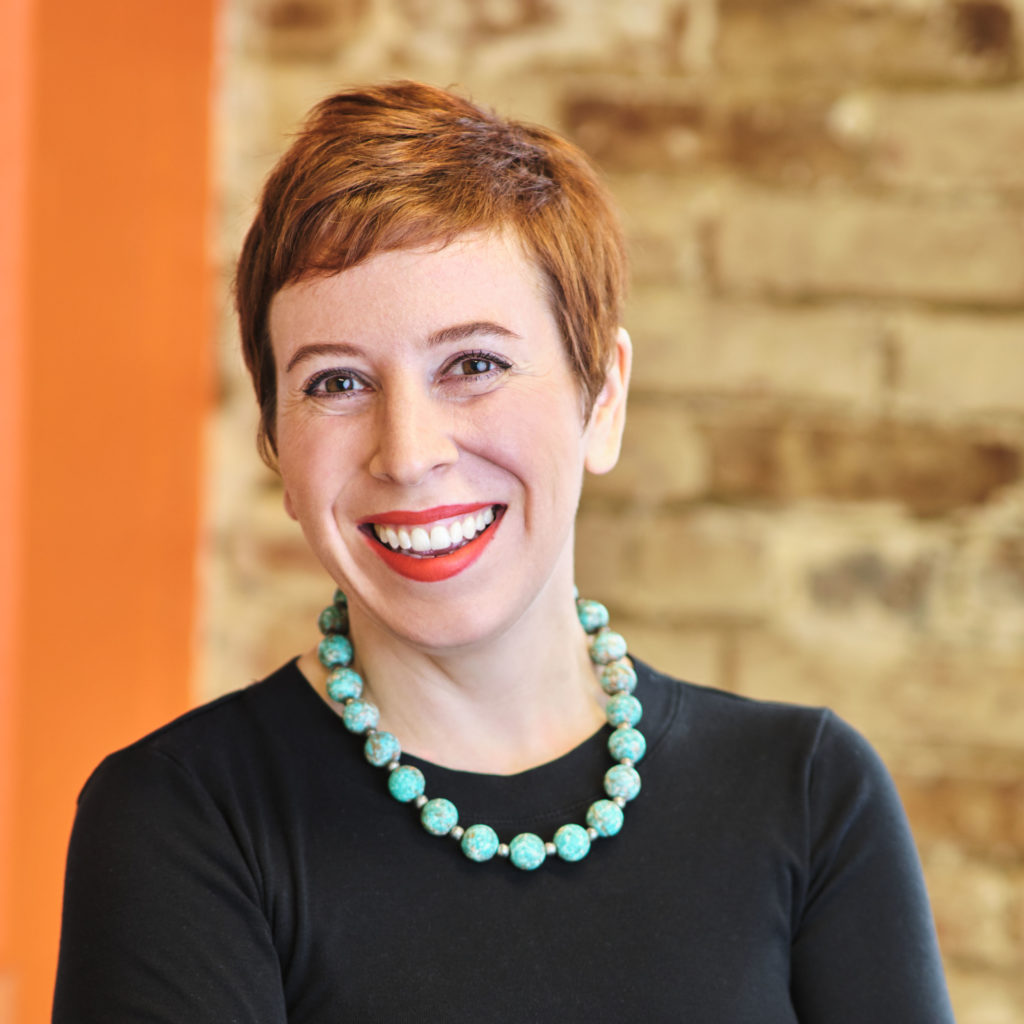
Sara McCarthy is Director of Communications at the Fund for Our Economic Future, where she leads the Fund’s awareness building efforts, overseeing the strategic communications of a wide variety of Fund initiatives, including The Two Tomorrows, The Paradox Prize and job hubs. Sara grew up in Warren, Ohio, and is proud to be a part of its manufacturing heritage, having worked at a now-shuttered steel mill while pursuing a bachelor's degree from John Carroll University. Sara spent several years as a business journalist, first in Cleveland then in New York, before earning a master’s degree in public service at DePaul University in Chicago. She spent a short time slinging pies at a bakery before returning to Northeast Ohio to work for the Fund for Our Economic Future.
More in this Series
You can read additional takeaways from the inaugural Inclusive Economies meeting in this blog post series:
Treye Johnson of the Federal Reserve Bank of Cleveland: “Inclusive Economies: Awareness building to more thoughtful action.”
Cari Morales, National Urban Fellow at the Cleveland Foundation: Inclusive Economies: Investment, displacement & engagement
Inclusive Economies: Investment, displacement & engagement
By Cari Morales, National Urban Fellow at the Cleveland Foundation
The work of TFN’s new Inclusive Economies working group began in earnest with the group’s November 2019 inaugural annual meeting in Cleveland. This is the second in a series of guest-authored posts that reflect on key meeting sessions and topics. (Click to see the meeting agenda and read speaker bios.)
New investment can be deeply destabilizing to neighborhoods of color, causing displacement that disrupts the economic well-being of residents and businesses, and the cultural fabric of the community as a whole. Inclusive Economies tackled this issue in a panel inspired by “Turning the Corner: Monitoring Neighborhood Change to Prevent Displacement,” a multi-city study of displacement led by the Urban Institute incubated by TFN’s Federal Reserve-Philanthropy Initiative. The Kresge Foundation’s Wendy Lewis Jackson and Bill Taft of the Local Initiatives Support Corporation (LISC) joined the study’s lead author, Kathy Pettit, to discuss how inclusive revitalization strategies are shaping more equitable neighborhood change in communities across the United States. We asked Caracciola (Cari) Morales, a National Urban Fellow at the Cleveland Foundation, to share the session’s most resonant messages.
Having grown up in the inner cities of the Midwest and pursued a career in community development, first at a community development financial institution and now in philanthropy, I’ve engaged with community change from multiple standpoints. Even so, I still wonder how development in under-resourced and -invested communities of color so often goes so wrong. The Inclusive Economies panel on neighborhood change suggested part of the answer may lie in the tendency to prioritize novelty over the familiar.
As in other sectors, innovation has become a touchstone of philanthropy. Yet panelists’ prescriptions for inclusive revitalization were rooted in enduring tenets of community development. A key lesson of the Urban Institute’s recent study of neighborhood displacement was the fundamental importance of community voice in preventing displacement, particularly in neighborhoods where signs of impending change aren’t easily detected by conventional metrics. This points funders committed to equitable revitalization toward investment in basic, grassroots capacity building that strengthens and elevates residents’ and business owners’ place at the table. Inclusive revitalization requires involvement from a full array of stakeholders, but the group that matters most are the neighbors and residents who know their communities intimately, and are present for the long haul.

Turning the Corner: Monitoring Neighborhood Change to Prevent Displacement
The study also underscored the role of strong neighborhood coalitions in shaping inclusive change, affirming the growing call for funder investment in local community organizing and relationship-building across traditional silos. In the “Turning the Corner” study, communities came together around shared data and metrics for monitoring neighborhood change, which empowered residents to engage meaningfully with city decision-makers on planning and policy issues. Similarly, national LISC’s new economic development framework emphasizes direct linkages between local community actors and regional economic and workforce development agencies, and creating a table unified around local priorities.
The panel discussion also reinforced a point made throughout the convening about the need for a steady focus on systems change. As Wendy Jackson put it, “If philanthropy continues to invest in communities but does not change systems, then that’s just burnt money.” If we’re honest about the greatest adverse impacts on communities of color (redlining being a prime example), we must also be intentional about how we as funders use our power to reform harmful systems.
Finally, Wendy’s observation that cultural competency is key to the advancement of economic development spoke to a core principle of place-based racial equity and inclusion: How we as funders show up in communities is as important as the strategies we fund. As the saying goes, change happens at the speed of trust. As professionals in the field, it’s incumbent upon us to understand, respect, and celebrate the communities we serve. With so much at stake, funders must be the change we want to see in the world.
About the Author
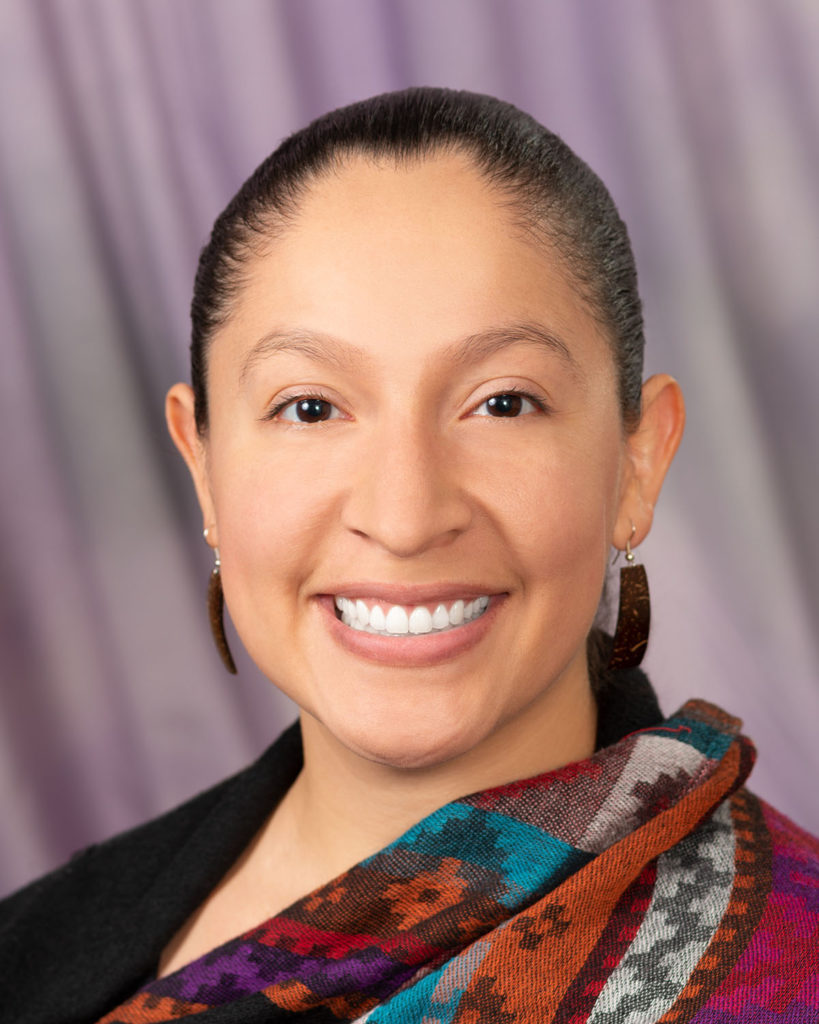
Cari Morales is a National Urban Fellow at the Cleveland Foundation with over 14 years of experience in the non-profit sector. Her passion for justice and change have led her to Indianapolis LISC, where she learned to connect people, resources and opportunities to improve communities’ quality of life, and to Pinellas County, Fla., where she organized communities of faith to implement policy changes in dental care, education and the juvenile justice system. Proud of her Puerto Rican and Nicaraguan roots, Cari became involved with the Latinx community in high school, and worked strategically to advocate for immigration rights during college at Indiana University, where she was a co-founder of D.R.E.A.M. IU.
More in this Series
You can read additional takeaways from the inaugural Inclusive Economies meeting in this blog post by Treye Johnson of the Federal Reserve Bank of Cleveland, "Inclusive Economies: Awareness building to more thoughtful action."
Inclusive Economies: Awareness building to more thoughtful action
By Treye Johnson, Federal Reserve Bank of Cleveland
The work of TFN’s new Inclusive Economies working group began in earnest with the group’s November 2019 inaugural annual meeting in Cleveland. This is the first in a series of guest-authored posts that reflect on key meeting sessions and topics. (Click to see the meeting agenda and read speaker bios.)
Founded on the principle of racial equity, the Inclusive Economies working group is a forum for funders to learn from peer organizations’ experience with race-based initiatives and — importantly examine
— their own relationship to race. Through a workshop led by ThirdSpace Action Lab's Evelyn Burnett and Mordecai Cargill on The REI Impact Continuum, meeting participants got a firsthand experience with a funder-supported initiative to build racial awareness in Northeast Ohio, and were challenged to articulate their personal commitment to advancing racially equitable systems change in their own communities. In this post, Treye Johnson, regional outreach manager at the Federal Reserve Bank of Cleveland, reflects on the nature of systems change, and what it demands of communities and the people and institutions that lead them.
As many communities — Northeast Ohio included — embark on the journey to address their own deep-rooted, race-based disparities, their efforts immediately meet a host of hurdles. Given the complex nature and sheer enormity of the impacts of structural racism, simply deciding where to start and what the work should look like can feel overwhelming. Further complicating the issue is the fact every person (and organization) has a different level of understanding of racism and race-based disparities, and varying levels of comfort with talking about them. Just as some are energized by the challenge in front of them, others may feel “tired of having this conversation again for the umpteenth time.” So how might those dedicated to racial equity work orient themselves in a way that addresses these challenges, and countless others not named above?
I believe the answer lies with the theory behind ThirdSpace Action Lab’s REI Impact Continuum (see graphic below; click here for their full PowerPoint): Large-scale problems can be solved through a continuous cycle of action and assessment. Start by assessing the current situation. Then diagnose the problem, identify an intervention, implement the intervention, and check to make sure it worked. But here’s the key: you must keep repeating that process until the desired outcome is achieved.
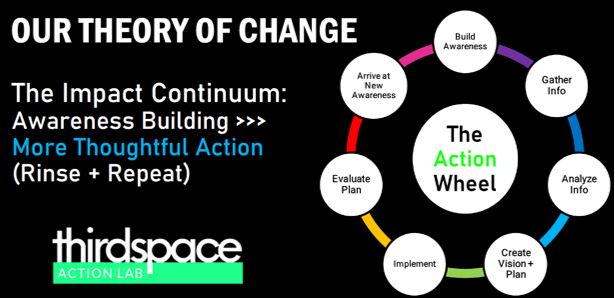
This is not to suggest the Impact Continuum alone is the magic bullet to defeat racism. The problem is too complex; 400+ years of race-based policies and practices cannot be overcome by any single intervention. That means that progress may be slow in some areas and faster in others. It also means that there will be setbacks, and that adjustments will need to be made along the way. But racial equity efforts must acknowledge that this work is long term and make plans accordingly.
So what role might the Federal Reserve System and its Reserve Banks play in the racial equity space? This is the exact question that a recently launched internal Federal Reserve learning community hopes to answer. While each Reserve Bank has its own unique areas of focus, those areas are often ones where race-based disparities are observed—for example, in workforce, education, housing, and small business. As a result, the Reserve Banks could play a vital role in helping to gather data and report on changes in disparities over time. Additionally, Reserve Banks may — and likely will — continue to engage with TFN though the TFN-Federal Reserve Philanthropy Initiative, a long-standing collaboration housed under the IE working group. This partnership, between groups of organizations accustomed to thinking far into the future, could provide valuable and much needed leadership in this space.
About the Author
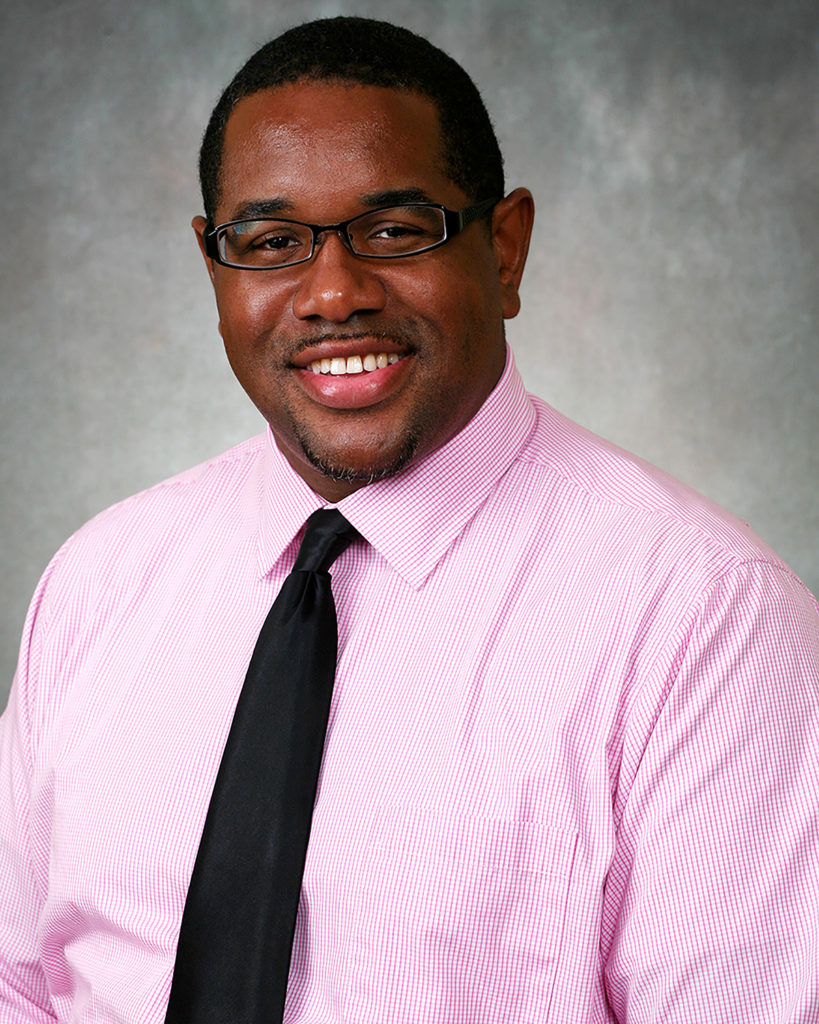
Treye Johnson is a regional outreach manager at the Federal Reserve Bank of Cleveland. From the Bank’s Cleveland office, he works with the community development team on current and emerging economic and community development issues. Previously, Treye was a program officer at Burton D. Morgan Foundation, a philanthropic organization that provides grants to support entrepreneurship and entrepreneurship education throughout Northeast Ohio. The views expressed are those of the author, and do not necessarily those of the Federal Reserve Bank of Cleveland or the Federal Reserve System.
Partners for Places: Meet our New Grantees!
By Tere Figueras Negrete, Director of Communications
Neighborhood gardens and an urban food forest that will produce fruits, herbs and vegetables for low-income communities. Vibrant and sustainable public spaces brought to life by transforming an abandoned roadway and an under-used local waterfront. Affordable housing that is able to weather extreme storms and climate-related disasters, and homeowners equipped with the skills to ensure homes are energy efficient and free of highly toxic lead.
These community-based approaches that address climate impacts, strengthen local economies and improve the well-being of all residents are the latest round of projects that will receive funding thanks to the Partners for Places matching grant program.
Six U.S. cities will receive $853,000 to support these sustainability efforts — which focus largely on empowering and engaging low-income neighborhoods and building partnerships between government sustainability offices and place-based foundations.
Atlanta, Ga., is creating the city’s first publicly owned food forest in an underserved community deemed a “food desert” because of a lack of access to fresh produce. The grant will be used to support education and volunteer programs at the seven-acre food forest located on one of the last remaining farmsteads in the area. The funding for the Urban Food Forest at Brown Mills will help establish volunteer and educational programs that encourage people to learn more about how food is produced and help foster a connection to the cultural and social history of the community.
In Philadelphia, Pa., the Partners for Places grant will support efforts to create a citywide urban agriculture plan to ensure all Philadelphians have access to fresh, healthy and affordable food. The coordinated approach is designed to further encourage urban agriculture, especially in disinvested areas where neighbors have transformed hundreds of vacant or under-used spaces into gardens that are often at risk of being lost due to development, lack of funding, and other issues.
Boston, Mass., where a significant proportion of housing is located in physically vulnerable areas such as floodplains, will support efforts to ensure the homes of some of the city’s most socially and economically underserved residents are ready to withstand future climate shocks. This includes plans to offer emergency preparedness planning and resiliency audits for owners and managers of affordable multi-family housing, helping them better protect properties and residents from the impacts of extreme storms, high temperatures and other climate-related disasters.
In Detroit, Mich., limited-income homeowners will be better able to address lead hazards, energy and water inefficiency and other home repair needs. Homeowners and their family members will go through a hands-on workshop series to acquire basic home renovation and repair skills, as well as training to safely remove lead or safely repair homes where lead may be present. Participants will receive lead-safe work supplies, weatherization supplies, access to a tool share for their renovation projects and the opportunity to be mentored by experienced contractors to reinforce class learnings.
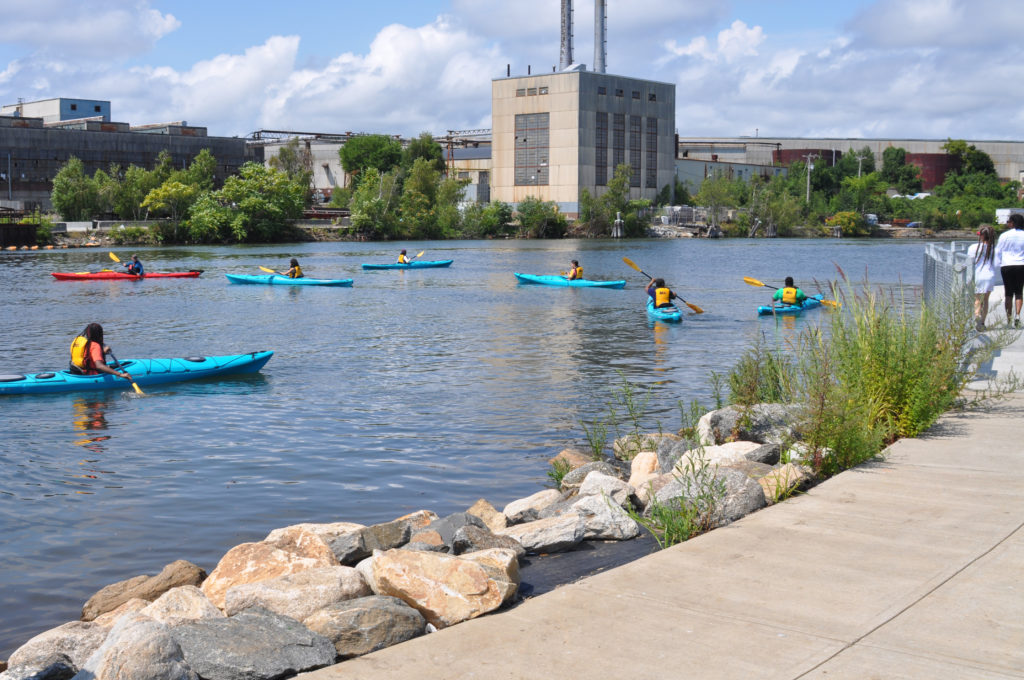
Two Connecticut communities will receive funding for green stormwater infrastructure projects designed to advance water-related sustainability goals.
An abandoned roadway in New Haven, Conn., will be turned into a community greenspace with green infrastructure connecting an urban community to parkland and the nearby Mill River. The project, which is located in an underserved community where access to the shore and greenspace have been sacrificed to industrial use, will convert the unused roadway into a “parklet” consisting of a multi-purpose trail and a series of native pollinator gardens and bioretention areas that will divert more than two million gallons of stormwater from New Haven’s combined sewer system each year. In Bridgeport, Conn., where a majority of the city’s waterfront areas are underused or inaccessible to the public, community stakeholders will work to build an equitable and sustainable waterfront that incorporates green infrastructure and resiliency features. Partners for Places funding will be used to support a community-based effort to plan, design, and create a waterfront pathway that traces Long Island Sound and several rivers.
Partners for Places, led by the Funders’ Network for Smart Growth and Livable Communities in partnership with the Urban Sustainability Directors Network, will provide $372,500 in funding to these six cities through the grant program. With contributions from local matching funders, a total of $853,000 will be committed to fund sustainability projects in these selected cities. This grant cycle includes $112,500 awarded to two green stormwater infrastructure projects — in the cities of Bridgeport and New Haven — designed to advance water-related sustainability goals.
The Partners for Places matching grants program has helped foster dozens of new partnerships between local government sustainability leaders and place-based funders across the U.S. and Canada over the past eight years. The matching grant program brings national funder investors together with place-based funders to support local sustainability and climate action projects. The program is supported by seven investor foundations: The JPB Foundation, The Kendeda Fund, The Kresge Foundation, The New York Community Trust, Pisces Foundation, The Summit Foundation, and Surdna Foundation.
“Communities across the U.S. and Canada are coming together to tackle the impacts of climate change with innovative projects that are making a difference in people’s lives, especially those in greatest need,” said Diane Ives, fund advisor for The Kendeda Fund’s People, Place and Planet program. “These partnerships foster long-term relationships that in turn help communities become more sustainable, equitable and prosperous places.”
To date, Partners for Places has awarded more than $7 million across North America in this successful matching grant program. Matching local funders have contributed in excess of $8 million, leading to more than more than $15 million in investments.
Partners for Places will open a new round of funding for the general grant program on Dec. 5, 2019. The Round 16 RFP will be due Jan. 31, 2020. If you have any questions about the Partners for Places grant program, please reach out to Ashley Quintana at ashley@www.fundersnetwork.org.
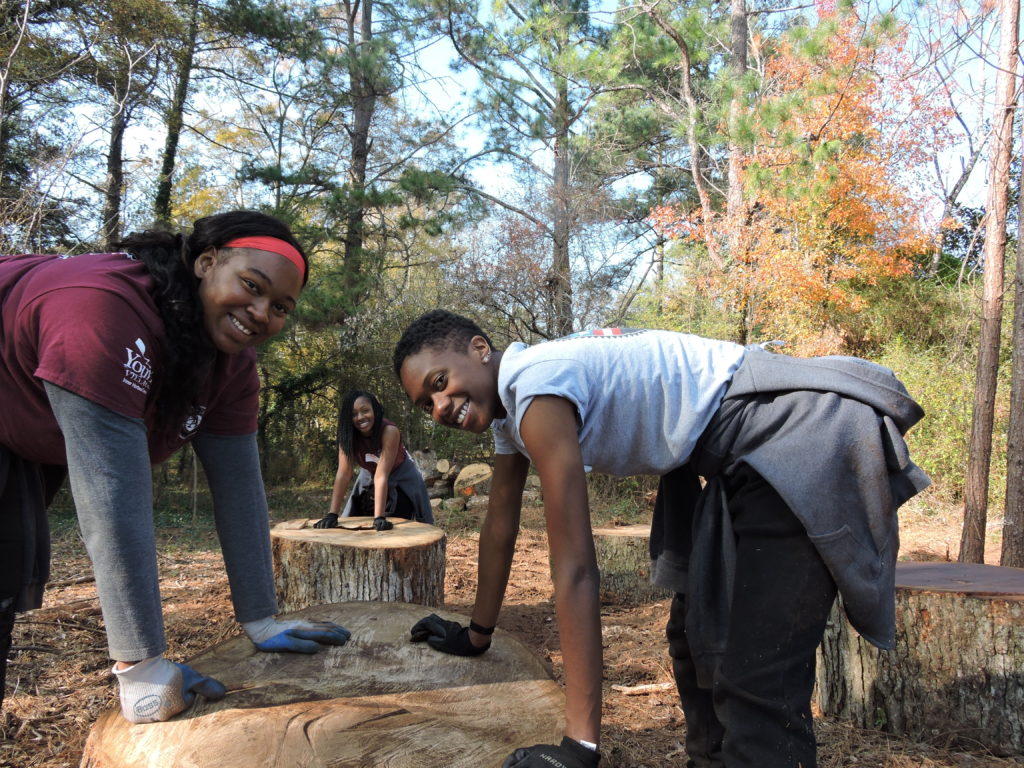
The latest Partners for Places grant recipients and their matching funders are:
- Atlanta, Ga. ($35,000): To create the nation’s largest and Atlanta’s first publicly-owned food forest to deliver environmental, economic, and social justice outcomes for the local community. Matching funder: Turner Foundation ($35,000).
- Boston, Mass. ($50,000): To ensure vulnerable multi-family affordable housing, which is home to some of Boston’s most socially and economically underserved residents, is ready to withstand future climate shocks. Matching funder: Local Initiatives Support Corporation (LISC) Boston ($50,000).
- Bridgeport, Conn. (72,500): To build an equitable and sustainable Bridgeport Waterfront and support a community-based vision to address climate impacts, strengthen local economies, and improve the well-being of all residents. Matching funders: Jeniam Foundation ($32,500); Long Island Sound Funders Collaborative ($40,000).
- Detroit, Mich. ($100,000): To address intersectional housing issues by empowering and equipping limited income homeowners to address lead hazards, energy inefficacy, and other home repair needs. Matching funder: The Fred A. and Barbara M. Erb Family Foundation ($100,000).
- New Haven, Conn. ($40,000): To transform an abandoned roadway, in an underserved community, into a community greenspace with green infrastructure connecting an urban community to parkland and the river. Matching funders: The Community Foundation for Greater New Haven ($30,000); The Watershed Fund ($10,000).
- Philadelphia, Pa. ($75,000): To develop a comprehensive citywide urban agriculture plan that will guide the coordinated efforts of city, non-profit, and resident stakeholders to better protect, maintain, and expand community gardens, farms, and orchards. Matching funder: William Penn Foundation ($150,000).
About Partners for Places Partners for Places
A joint project of the Funders’ Network for Smart Growth and Livable Communities and the Urban Sustainability Directors Network, Partners for Places is a successful matching grant program that improves U.S. and Canadian communities by building partnerships between local government sustainability leaders and place-based foundations. National funders invest in local projects developed through these partnerships to promote a healthy environment, a strong economy and well-being for all residents. Through these investments, Partners for Places fosters long-term relationships that make our communities more prosperous, livable and vibrant. For more information on Partners for Places, visit www.fundersnetwork.org/partners-for-places/
About the Funders’ Network for Smart Growth and Livable Communities
The Funders’ Network for Smart Growth and Livable Communities (TFN) is a mission-driven network of grantmakers across North America, working to inspire, strengthen and expand funding and philanthropic leadership that yield environmentally sustainable, socially equitable, and economically prosperous regions and communities.
About The Urban Sustainability Directors Network
The Urban Sustainability Directors Network (USDN) is a peer-to-peer network of local government professionals from cities across the United States and Canada dedicated to creating a healthier environment, economic prosperity, and increased social equity. Our dynamic network enables sustainability directors and staff to share best practices and accelerate the application of good ideas across North America.
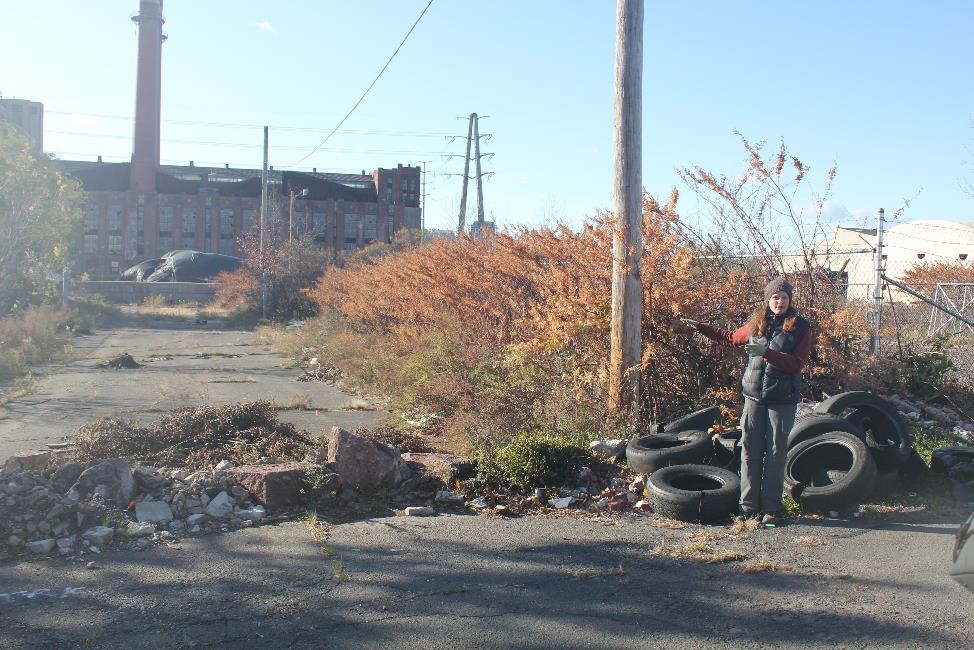
Below: An artist's rendering of the Mill River Trail.
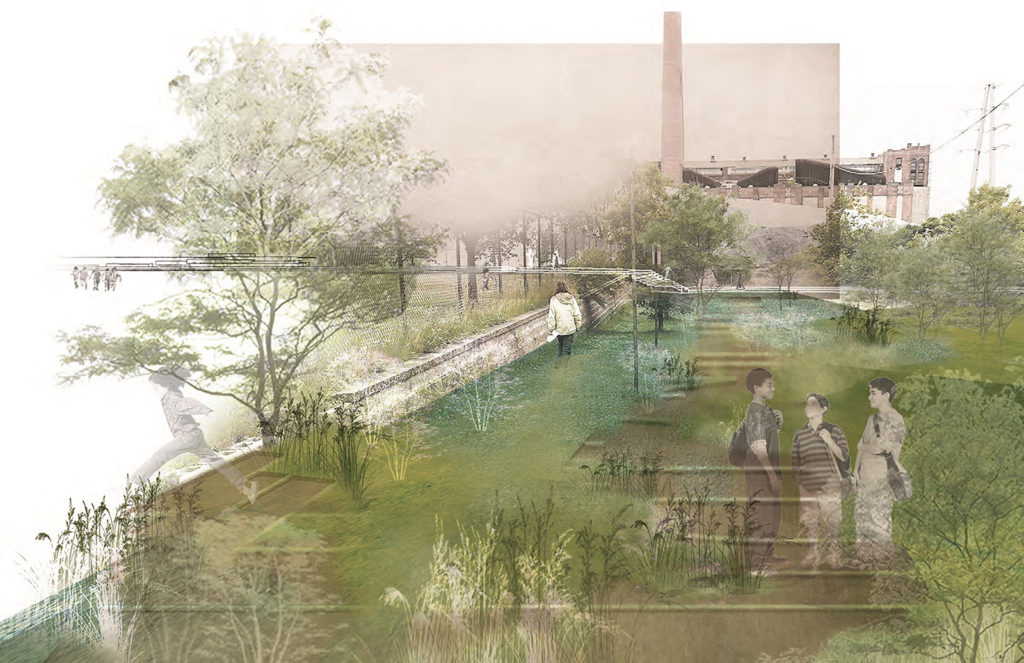
For additional information and media inquiries, contact: Tere Figueras Negrete, Communications Director at the Funders’ Network for Smart Growth and Livable Communities at tere@www.fundersnetwork.org


